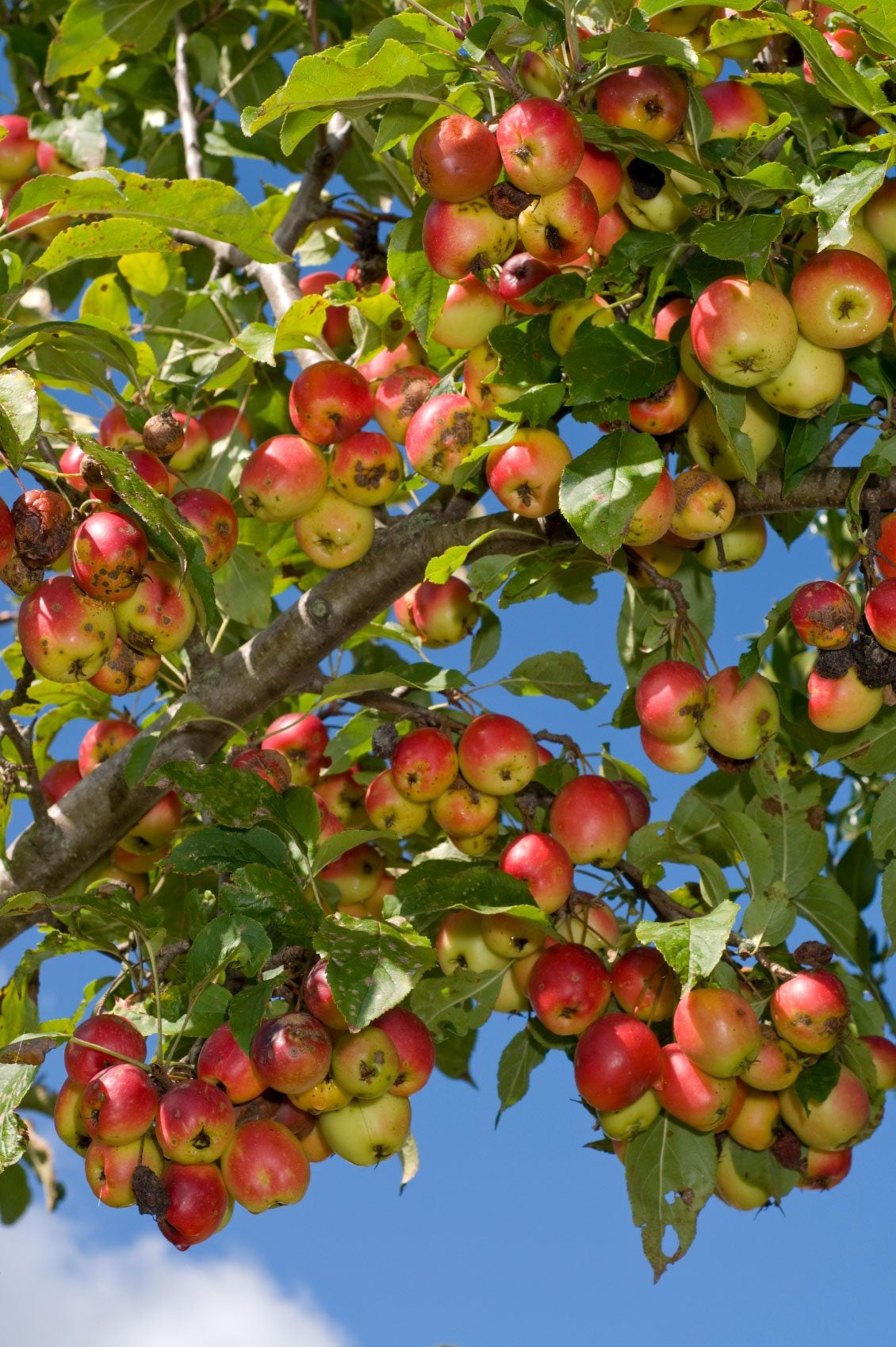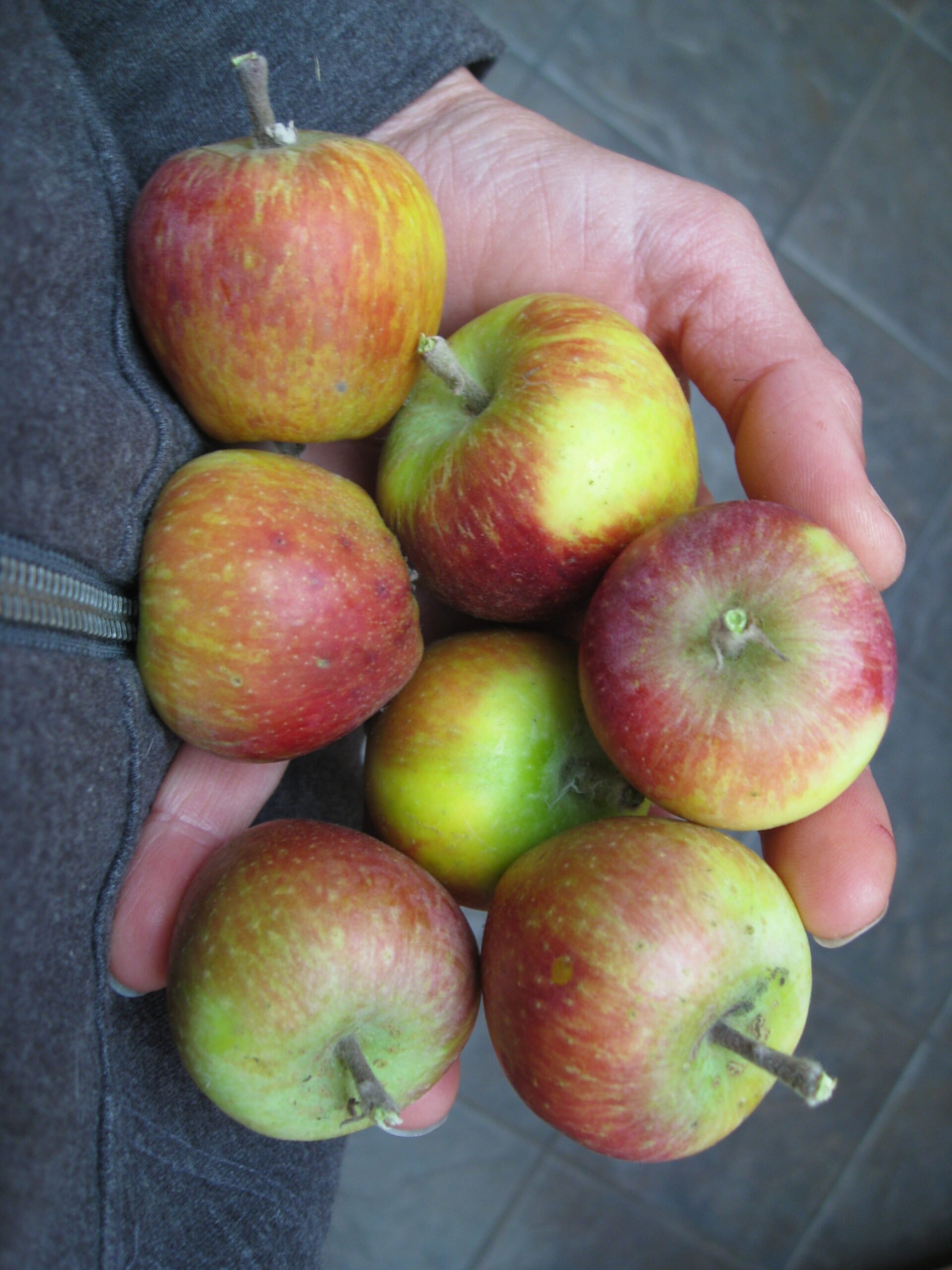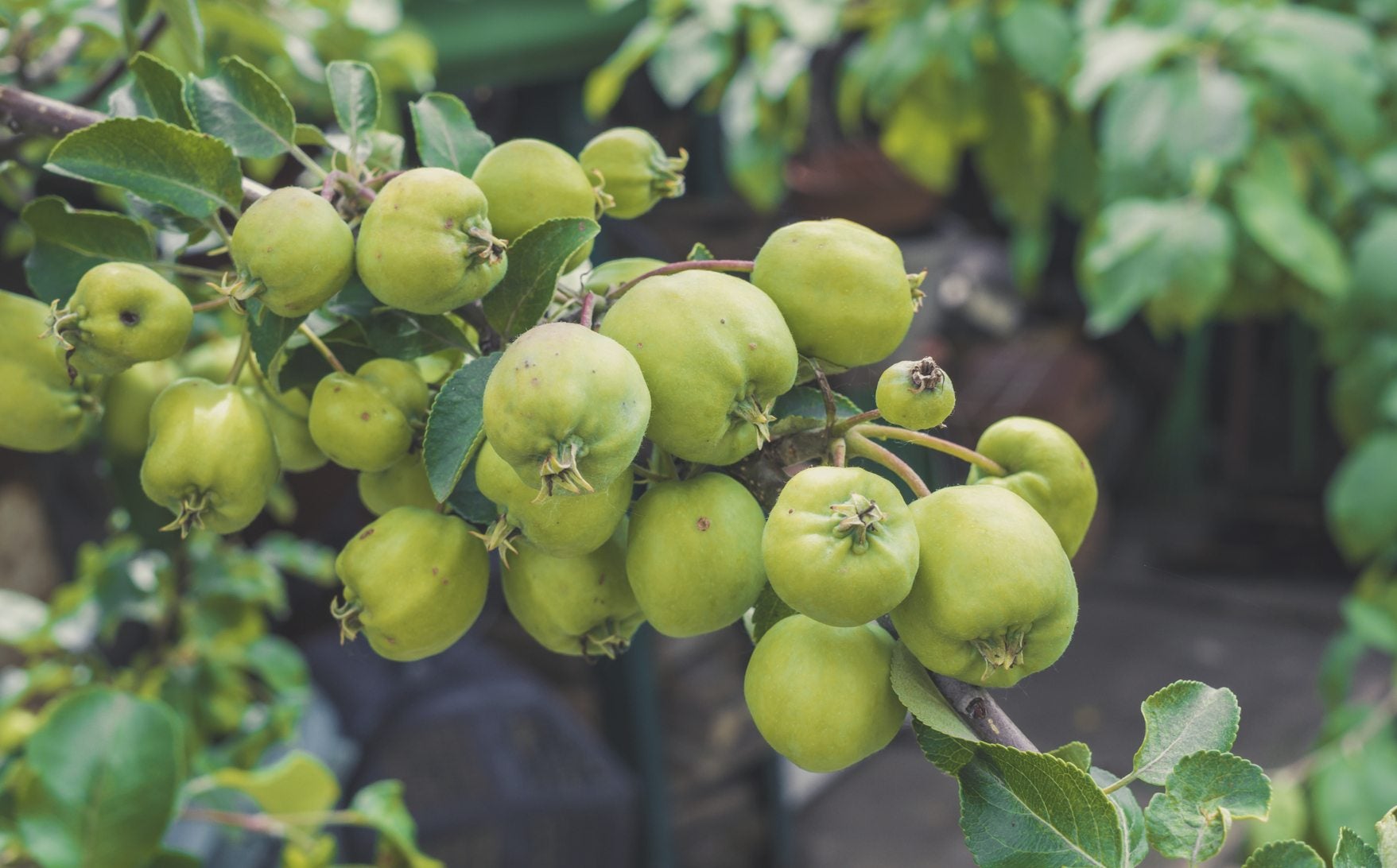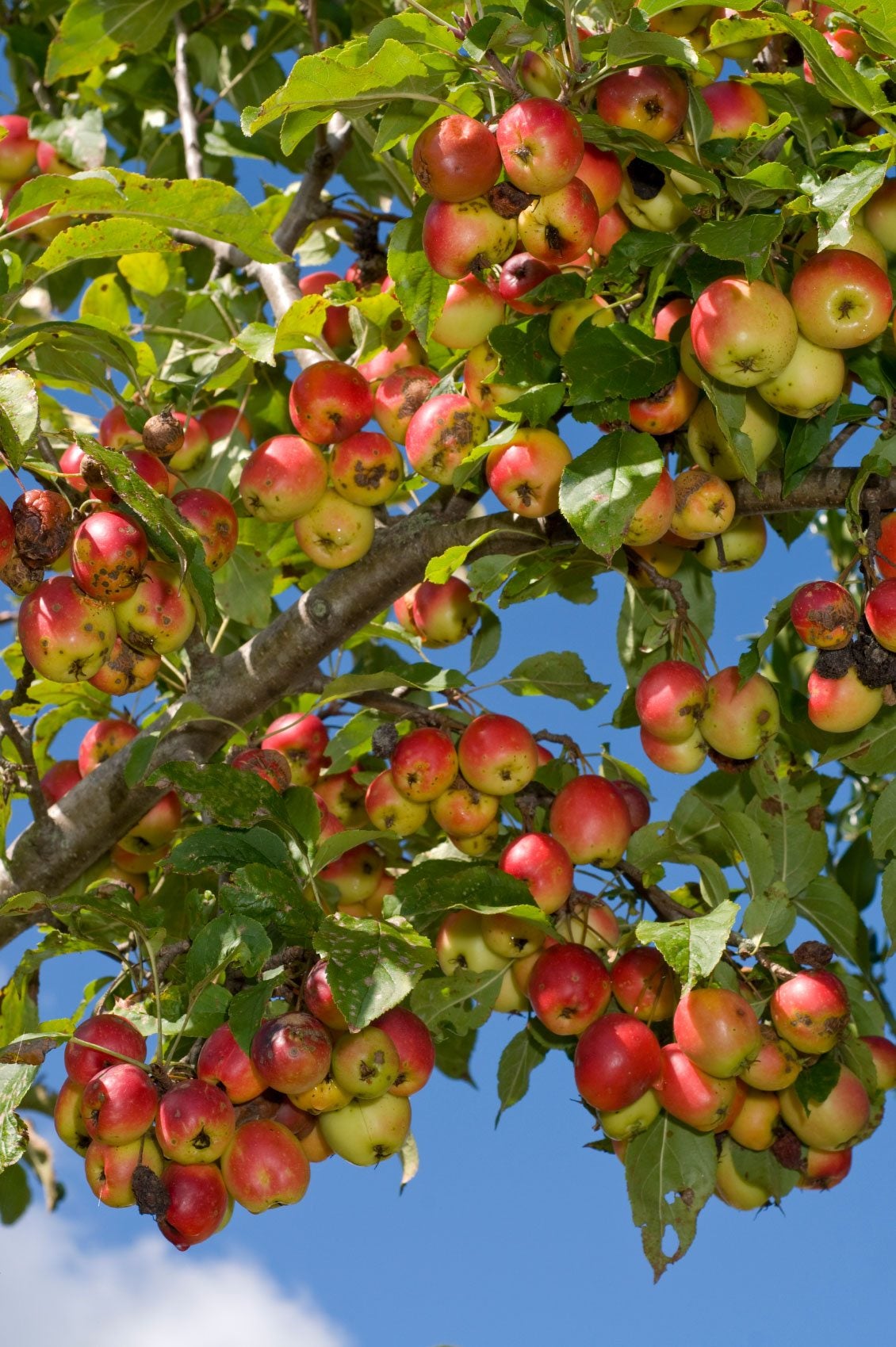In the world of fruit production, the size of apples has always been a key factor in determining their quality and marketability. However, if you’ve found yourself pondering the question, “Why are my apples so small?”, you’re not alone. This article will explore some of the common reasons behind undersized apples, ranging from environmental factors and nutrient deficiencies to pollination issues and improper pruning techniques. By understanding the potential causes, you’ll be equipped with the knowledge needed to address this concern and ensure the growth of healthy, robust apples.

Possible Causes of Small Apples
If you have ever wondered why your apples are smaller than expected, there are several factors that could be contributing to this issue. Small apples can be a result of various genetic, environmental, and management factors. By understanding and addressing these potential causes, you can ensure healthier and more substantial apple harvests.
Genetics
The genetic makeup of apple trees plays a significant role in determining the size of the fruits they produce. Different apple varieties have distinct characteristics, including size. Some apple varieties naturally produce smaller fruits compared to others. So, if you are growing a specific apple variety known for its small fruit size, it is likely a genetic predisposition rather than a result of other factors.
Furthermore, growing apple trees from seedlings can also lead to smaller fruit size. Seedling apples are not clones of their parent trees and can exhibit a wide range of characteristics, including smaller fruit size. If you are growing apple trees from seeds, it is important to note that the resulting fruits may not necessarily resemble the parent plant.

Lack of Nutrients
A lack of essential nutrients can restrict the growth and development of apple trees, resulting in smaller apples. Soil nutrient deficiencies are a significant factor to consider. Insufficient levels of essential macronutrients such as nitrogen, phosphorus, and potassium can have a detrimental impact on fruit size. It is crucial to conduct soil tests to determine the nutrient levels in your orchard and then amend the soil accordingly to provide the necessary nutrients for optimal tree growth and fruit development.
Imbalanced fertilizer application is another factor that can contribute to small apples. Applying too much of one nutrient while neglecting others can disrupt the nutrient balance in the soil, leading to unfavorable growth conditions for apple trees. Regular soil testing and following recommended fertilizer application guidelines can help ensure a balanced nutrient supply and promote healthy fruit development.
Additionally, the insufficient presence of organic matter in the soil can also hinder the size of apples. Organic matter helps retain moisture, improves soil structure, and fosters nutrient availability. Incorporating organic matter, such as compost or well-rotted manure, into the soil can enhance fertility and create favorable conditions for robust apple growth.
Inadequate Water Supply
Water availability is crucial for apple tree growth and the development of well-sized fruits. Drought conditions can significantly impact apple trees, causing stress and reduced fruit size. A lack of water affects the tree’s ability to uptake nutrients and can also lead to increased susceptibility to pest and disease issues. Consistent and sufficient irrigation, particularly during dry periods, is essential to maintain optimal apple tree health and promote larger fruit production.
Irregular irrigation practices can also contribute to small apples. Inconsistent watering schedules or inadequate water application can disrupt the tree’s growth cycle and negatively affect fruit development. It is important to establish a regular irrigation routine, monitoring soil moisture levels, and providing adequate water to the trees to ensure optimal growth conditions.

Poor Pollination
Pollination is a critical process in apple tree reproduction. If pollination is inadequate, it can result in smaller or misshapen apples. Pollination occurs when pollen from the male parts of the flower (stamen) is transferred to the female part (pistil). Several factors can hinder proper pollination, leading to small apple size.
Lack of pollinators, such as bees, can greatly impact fruit development. Bees play a crucial role in transferring pollen between flowers, ensuring successful fertilization. If there is a scarcity of bees in the orchard, either due to lack of suitable habitat or pesticide use, pollination may be compromised. To address this, create a pollinator-friendly environment by planting flowers that attract bees and minimize pesticide use during bloom.
Inadequate pollen transfer can also occur when weather conditions are unfavorable during flowering. Rain or strong winds can disrupt pollen movement, preventing successful fertilization. Monitoring weather patterns and proper orchard management can help mitigate these effects and promote better pollination.
Pest and Disease Infestation
Pests and diseases are common challenges faced by apple growers, and they can significantly impact fruit size and quality. Insects like aphids, mites, or apple maggot flies can damage developing apples, causing them to be smaller or deformed. Proper pest management practices, including regular scouting and appropriate insecticide applications when necessary, can help prevent damage and support larger fruit development.
Fungal or bacterial infections can also lead to small apples. Diseases like apple scab, fire blight, or powdery mildew can affect fruit size and quality. Implementing proper disease management strategies, such as timely pruning, applying fungicides, and removing infected plant material, can minimize the impact of diseases and promote healthier fruit growth.

Environmental Factors
Environmental conditions play a significant role in determining the size of apples. Extreme temperatures, especially during the growing season, can hinder fruit development. Heatwaves or prolonged periods of high temperatures can stress apple trees, affecting their ability to transport nutrients to the developing fruits. Similarly, excessively cold temperatures, especially during bloom, can result in poor pollination and smaller fruit size. Monitoring temperature fluctuations and employing mitigation measures, such as providing shade or using protective covers, can help minimize the impact of extreme temperatures on apple size.
Weather events like frost, freeze, hail, or storms can also damage developing apples, leading to smaller sizes. Frost or freeze damage can harm blossoms or young fruit, impairing their growth potential. Hailstorms can physically damage fruit, causing deformities and reduced sizes. Wind exposure can lead to desiccation or physical abrasion, negatively affecting fruit development. Implementing protective measures, such as installing windbreaks or using netting to shield against hail, can help reduce the impact of environmental factors on apple size.
Sunburn is another environmental factor that can contribute to small apples. Excessive exposure to direct sunlight can scorch the fruit’s surface, affecting its growth and development. Providing adequate shading or employing protective measures, such as using reflective mulches or tree guards, can help prevent sunburn and promote larger fruit sizes.
Improper Pruning
Pruning is an essential practice for maintaining the health and productivity of apple trees. However, improper pruning techniques or timing can hinder fruit size. Pruning should be done during the dormant season, generally in late winter or early spring before bud break. If pruning is performed too late or too close to the flowering period, it can disrupt the trees’ growth cycle and impact fruit development. Following proper pruning techniques and timing guidelines can help ensure optimal fruit size and quality.
Excessive pruning can also lead to smaller apples. Over-pruning removes too many branches, reducing the tree’s ability to produce and sustain an adequate number of fruits. It is important to strike a balance between pruning for tree structure and maintaining an appropriate number of fruit-bearing branches. Consultation with a professional arborist or orchardist can provide guidance on proper pruning practices specific to your apple trees.
Overcrowding
Planting apple trees too close together or in crowded orchards can contribute to smaller fruit size. Lack of space for growth restricts the tree’s ability to spread its roots and canopy, leading to reduced nutrient uptake and limited access to sunlight. This overcrowding can result in competition among trees for resources, including water, nutrients, and light. Providing adequate spacing between trees and maintaining proper orchard layout can help mitigate overcrowding issues and promote larger fruit production.
Unequal competition for resources within crowded orchards is another factor that can affect fruit size. Trees that receive better access to light and nutrients will generally produce larger fruit. Managing orchard density by thinning out weaker or less productive trees can help redistribute resources and promote more uniform fruit development.
Harvesting Practices
The timing and techniques used during harvesting can impact the size of apples. Premature harvesting, where apples are picked before they have reached their full size and maturity, can result in smaller fruits. It is essential to allow apples to fully ripen on the tree before harvesting to ensure optimal size and flavor. Monitoring fruit maturity indicators, such as firmness or sugar content, can guide proper harvest timing.
Inadequate thinning can also contribute to small apples. Thinning is the practice of removing excess fruit from the tree to achieve better fruit quality and size. If there are too many fruit clusters, it can strain the tree’s resources, leading to smaller individual fruit sizes. Thinning should be done when the fruits are small, typically a few weeks after bloom. Removing excess fruit to achieve proper spacing allows the remaining apples to grow to their full potential.
In conclusion, small apple size can be attributed to various factors, including genetics, nutrient deficiencies, water supply issues, poor pollination, pest and disease infestation, environmental conditions, improper pruning, overcrowding, and harvesting practices. Analyzing and addressing these potential causes can help promote larger and healthier apple harvests. By implementing proper management practices, providing optimal growing conditions, and adopting strategies to mitigate potential issues, you can enjoy a bountiful harvest of sizeable and delicious apples from your orchard.



